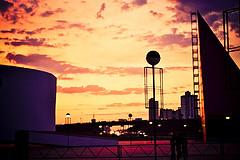I have word Belgrade conjures up images of war and ethnic cleansing. But a new Belgrade is emerging of music festivals and nightclubs, pedestrianised streets and designer boutiques as Serbia prepared to desyncs the European mainstream. The Trans-European Express had already broken down and had its locomotive replaced. A heatwave gripped the Balkans, but there was no water on the slow moving train and no air conditioning. What was chilly, however, was the behaviour of the border guards, who demanded and stamped our passports with no glimmer of a smile. As far as Croatia, the train was packed. But after Serbia entering it slowly emptied. When we finally reached Belgrade, at nearly 3 am, barely 20 passengers climbed down.
Outside, the magnificent neoclassical 19th Century station, heat-dazed stray dogs wandered around dozily. Close by stood tower blocks shattered by cruise missiles reminders of Nato s 1999 assault on the Milosevic regime. Belgrade has long been one of .red bottom shoes the most cosmopolitan cities in Eastern Europe, but it has a slightly faded charm. Its history has been fundamentally edgy, to gateway to the world beyond Europe. It is a city of cafes, of chain smokers, of immigrants, many of them displaced from across the former Yugoslavia as a result of the recent wars. It still feels on the edge. But Belgrade is also an intriguing city and one eager to rediscover the confidence of its heyday. Built around a commanding crag at the confluence of the Danube and Sava rivers, it was an important Roman settlement.
Marina Sibalic, an architect, took me up to the immense Kalimegdan Fortress, bastion that has seen plenty of largely religious conflict. Indeed, the Siege of Belgrade in 1453 is remembered as a fight for the very survival of Christianity.
 Festival of the Boryeong mud, July 2010 each month of July South Korea, lovers of the mud of all Korea’s South, and almost 1.5 million visitors, gather in Daecheaon Beach to swim, fight and massage with its famous mud, known for its therapeutic properties. This event requires much participation, so if you’re not by the work of get dirty, better stay home. Eastern neck red Dublin summer games, Georgia July 10th, what began as a joke in 1996, has become an important annual event, with more than 100,000 visitors each year. They do evidence related to mud, pigs, pinrreles and all kinds of nasty things. All the benefits of the Redneck games go to local charities. The fall of AlceTalkeetna, Alaska July 2010 Festival in this celebration quite disgusting, people are thrown away Moose droppings tucked in balloons and who proves more coated wins a prize of 1,000 euros. There is also live music, sports and manure jewelry Elk. If you go, careful where you step! La Tomatina Bunol, ValenciAgosto 2010 find flights to Valencia to participate in one of the world’s largest food wars.
Festival of the Boryeong mud, July 2010 each month of July South Korea, lovers of the mud of all Korea’s South, and almost 1.5 million visitors, gather in Daecheaon Beach to swim, fight and massage with its famous mud, known for its therapeutic properties. This event requires much participation, so if you’re not by the work of get dirty, better stay home. Eastern neck red Dublin summer games, Georgia July 10th, what began as a joke in 1996, has become an important annual event, with more than 100,000 visitors each year. They do evidence related to mud, pigs, pinrreles and all kinds of nasty things. All the benefits of the Redneck games go to local charities. The fall of AlceTalkeetna, Alaska July 2010 Festival in this celebration quite disgusting, people are thrown away Moose droppings tucked in balloons and who proves more coated wins a prize of 1,000 euros. There is also live music, sports and manure jewelry Elk. If you go, careful where you step! La Tomatina Bunol, ValenciAgosto 2010 find flights to Valencia to participate in one of the world’s largest food wars.